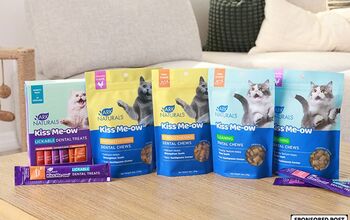How is Commercial Dog Food Regulated?

Commercial food products for people are heavily regulated by the Food and Drug Administration (FDA) – but what about dog food? While commercial dog food companies face fewer restrictions and regulations than food meant for human consumption, there are still some regulations in place to ensure the safety and nutritional adequacy of pet food products. In this article you will learn the basics about these regulations.
Overview of FDA Regulations
The FDA does not require that commercial pet food manufacturers receive pre-market approval for their products. They do require, however, that the ingredients used in the food are safe and serve an appropriate function in the formula. For example, meat products like poultry and fish do not require any sort of pre-market approval but artificial ingredients like colorings must have approval. Certain ingredients like flavorings and preservatives are generally considered save for a certain intended use (these products are referred to as GRAS). These regulations are in place to ensure the safety of the product and to make sure that they are truthfully labeled.
Pet Food Labeling
There are two levels of regulation for pet food products. The FDA is responsible for ensuring that products are properly identified with the name of the product, the net quantity, the name and location of the manufacturer/distributor and a listing of ingredients in order of quantity. The second level of regulation is overseen by the American Association of Feed Control Officials (AAFCO) which ensures the nutritional adequacy of the product as well as certain labeling requirements. AAFCO is responsible for monitoring and enforcing regulations for not only pet food but also commercial animal feed products for livestock.
AAFCO Regulations for Pet Food
AAFCO is a non-profit organization made up of volunteer members from various local, state and federal agencies that are charged with the task of regulating the sale and distribution of animal feeds. In regard to the labeling of commercial pet food products, AAFCO requires eight items to be present on the label:
- The name of the brand and product
- The name of the species for which the food is intended
- The quantity of the product contained (net weight or net volume)
- The guaranteed analysis (a percentage breakdown of the nutrients in the food)
- The ingredients list in order of predominance by weight, as formulated
- A nutritional adequacy statement – states that the food is complete and balanced for a particular life stage (growth, reproduction, adult maintenance or a combination)
- Feeding directions for the product including feeding frequency
- Name and address of manufacturer/distributor
One of the most important things to look for on a commercial pet food product is the AAFCO statement of nutritional adequacy. This statement is based on feeding trial and nutrient content of the product and it ensures that the product is formulated to provide for the basic nutritional needs of the life stage for which it is intended – such as for puppies, adult dogs or senior dogs. It is not recommended that you purchase a product that does not have this statement.
While commercial pet food products do not undergo the same level of regulation as products designed for human consumption, it’s good to know there is some regulation of what goes into your pet’s food. If you are concerned with the quality and safety of your pet’s food, you should take the time to learn how to read and interpret pet food labels. Avoid taking marketing claims such as “natural” and “holistic” at face value because the use of these terms is not regulated by the FDA. The only way to ensure that your pet receives a safe and healthy pet food product is to do your research and to be intentional about the products you buy.

Kate Barrington is the loving owner of two cats (Bagel and Munchkin) and a noisy herd of guinea pigs. Having grown up with golden retrievers, Kate has a great deal of experience with dogs but labels herself a lover of all pets. Having received a Bachelor's degree in English, Kate has combined her love for pets and her passion for writing to create her own freelance writing business, specializing in the pet niche.
More by Kate Barrington























